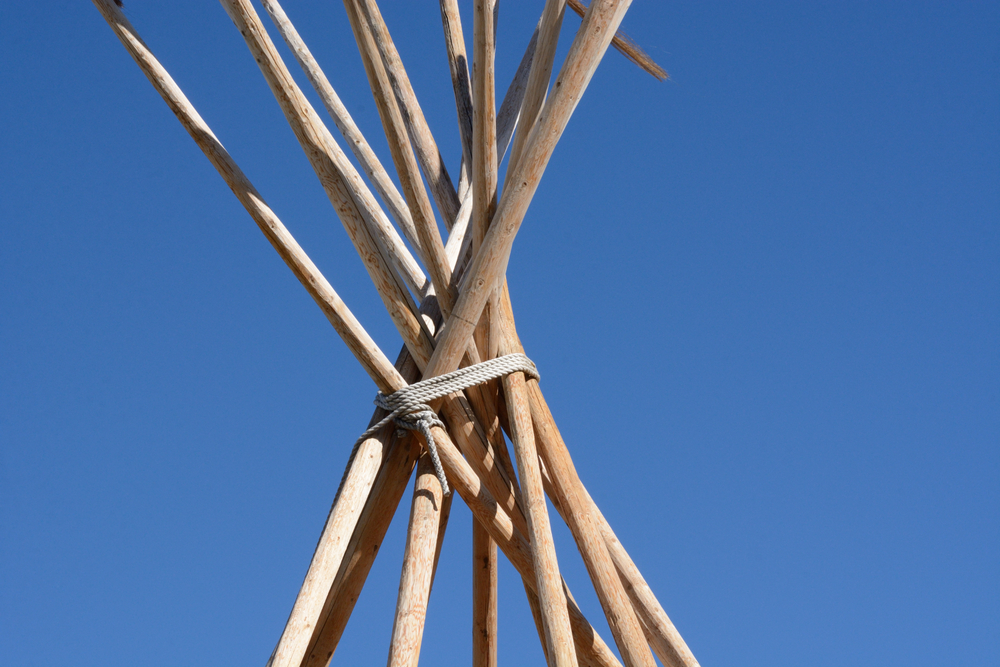
Teepees – What To Know In The Winter
December 23, 2024 4:20 pm Leave your thoughtsTeepees, or tipis, are iconic and functional structures originally used by Indigenous peoples of North America. Designed for mobility, durability, and comfort, they offer a unique way to experience nature. However, when it comes to using a teepee in the winter, there are specific considerations to ensure safety and warmth. This guide delves into the dos and don’ts of teepees in the cold and how to prepare for winter using a teepee.
The Structure of a Teepee and Its Winter Potential
A teepee’s conical shape and sturdy framework make it ideal for withstanding harsh weather conditions, including winter. Its design allows for efficient heat circulation when a fire is lit inside, and the steep slopes help shed snow, preventing heavy accumulation. However, winter use requires thoughtful preparation.
Understanding Teepee Materials
Modern teepees come in various materials, from traditional buffalo hides to contemporary canvas options. For winter:
- Choose Insulated Materials: Canvas is a popular choice due to its durability and breathability, but for winter, look for heavy-duty or insulated versions.
- Waterproofing Is Key: Ensure the material is waterproof or treated to repel moisture to prevent leaks from melting snow.
Teepee Size and Placement
Selecting the right size and location can significantly affect your winter camping experience.
- Size Considerations: A larger teepee can accommodate more people and equipment but requires more effort to heat.
- Placement Tips: Position the teepee on flat ground, away from potential avalanche zones or areas prone to heavy snowfall. Avoid low-lying areas where cold air can settle.
Preparing for the Winter Using a Teepee
Preparation is essential for ensuring comfort and safety in the cold. Here’s what you need to consider:
Choosing the Right Equipment
- Stove and Chimney System: A wood-burning stove is essential for maintaining warmth inside the teepee. Ensure it has a proper chimney to ventilate smoke safely.
- Insulated Ground Coverings: Use insulated mats, rugs, or thick tarps to prevent heat loss through the ground.
- Sleeping Arrangements: High-quality sleeping bags rated for sub-zero temperatures and insulated sleeping pads are crucial for a good night’s rest.
Weatherproofing the Teepee
To make your teepee winter-ready:
- Seal Drafts: Use additional fabric or foam insulation to seal gaps at the base of the teepee.
- Snow Anchoring: Secure the teepee with heavy-duty stakes or weighted anchors to prevent movement during snowstorms.
- Double Layers: Adding an inner liner creates a pocket of air for added insulation.
Dos and Don’ts of Teepees in the Cold
When using a teepee during winter, following these guidelines can make all the difference:
The Dos
- Do Maintain Ventilation: While it’s essential to retain warmth, proper ventilation prevents condensation and ensures fresh air circulation.
- Do Keep Snow at Bay: Regularly clear snow from the teepee’s base to prevent it from freezing and creating structural issues.
- Do Use Fire Safely: Position the stove or firepit centrally, and always have a fire extinguisher or water nearby for emergencies.
- Do Pack Extra Fuel: You’ll likely need more wood or other fuel than anticipated to maintain warmth through long winter nights.
The Don’ts
- Don’t Neglect Safety: Never leave a fire unattended, and avoid overloading the stove, which can cause overheating.
- Don’t Use Inferior Materials: Thin canvas or untreated fabric can lead to heat loss and water leaks.
- Don’t Overcrowd the Space: Too many people or excessive gear can hinder heat distribution and airflow.
Enhancing Comfort Inside the Teepee
Winter camping can be challenging, but you can create a cozy retreat inside your teepee with a few enhancements:
Lighting and Ambiance
- LED Lanterns and String Lights: These provide safe, efficient lighting while adding a warm ambiance.
- Reflective Surfaces: Use reflective materials near the fire or stove to maximize heat distribution.
Organization and Storage
- Hanging Systems: Utilize the teepee’s poles to hang gear, keeping it off the ground and organized.
- Zoned Layouts: Designate specific areas for sleeping, cooking, and storage to maintain order and efficiency.
Cooking Tips
- Compact Cooking Gear: Use lightweight, multi-purpose cooking tools designed for camping.
- Warm Meals: Focus on easy-to-cook, high-calorie meals to keep energy levels high in the cold.
- Safe Storage: Store food securely to avoid attracting wildlife.
Benefits of Winter Teepee Camping
Despite the challenges, winter teepee camping offers unique benefits:
Connection to Nature
The immersive experience of staying in a teepee brings you closer to nature. The sound of snow falling and the crackle of the fire create an unparalleled serenity.
Cultural Appreciation
Using a teepee provides insight into Indigenous traditions and their ingenuity in creating sustainable shelters.
Versatility
Teepees can adapt to various winter activities, from casual camping to extended wilderness expeditions.
Troubleshooting Common Winter Challenges
Heat Loss
If your teepee isn’t staying warm:
- Check for drafts at the base or around the entrance.
- Add more insulation layers inside.
- Ensure the stove or fire is functioning efficiently.
Excess Moisture
Condensation can be an issue in cold weather:
- Increase ventilation by opening the smoke flaps slightly.
- Avoid bringing wet clothing or gear inside.
Snow Load
Heavy snow can stress the structure:
- Regularly brush snow off the teepee’s exterior.
- Adjust the poles if necessary to maintain tension.
Final Thoughts
Winter teepee camping can be a rewarding adventure when done correctly. By understanding the dos and don’ts of teepees in the cold and taking steps to prepare for winter using a teepee, you can create a warm, safe, and memorable experience. Embrace the season, and enjoy the unique charm of winter camping in a teepee.
Need Wooden Lodgepoles in Lapoint, UT?
Categorised in: Uncategorized
This post was written by admin
